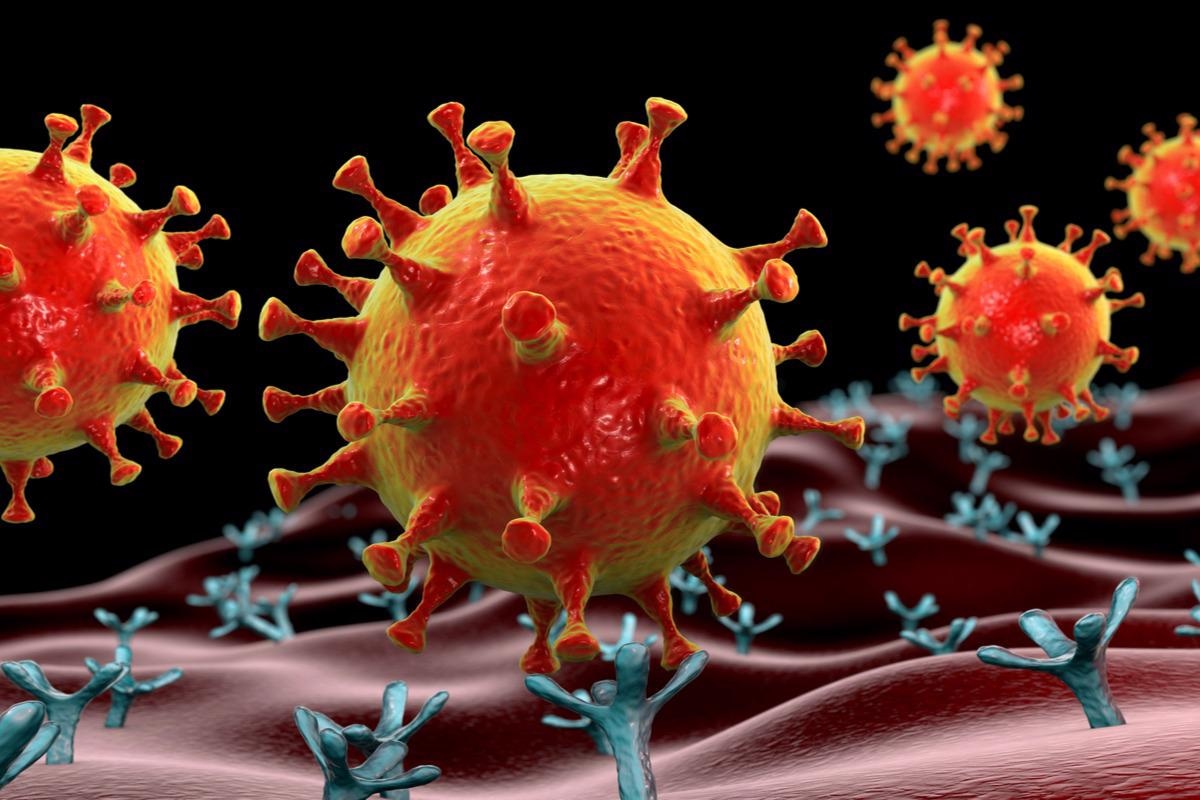Extracellular vesicles (EVs) – nano-sized vesicles are released naturally from cells that cannot replicate. Emerging evidence suggests the crucial role of EVs in intercellular communication by bioactive molecules transfer from donor to recipient cells. These molecules include – nucleic acids, proteins, and lipids.
 Study: ACE2-enriched extracellular vesicles enhance infectivity of live SARS-CoV-2 virus. Image Credit: Kateryna Kon/Shutterstock
Study: ACE2-enriched extracellular vesicles enhance infectivity of live SARS-CoV-2 virus. Image Credit: Kateryna Kon/Shutterstock
Background
EVs are instrumental in physiological and pathological processes, and they have also been implicated in viral transmission. It was found that enteroviruses enclosed in EVs demonstrate greater efficiency in infecting host cells than free viral particles.
The primary route of entry of the severe acute respiratory syndrome coronavirus 2 (SARS-CoV-2) into host cells occurs when the viral spike (S) protein interacts with the host-cell surface receptor angiotensin-converting enzyme 2 (ACE2). Since ACE2 expression is more prominent in the human airways and intestinal epithelial cells, these cells have a higher predilection for SARS-CoV-2 invasion.
Upon release from infected cells, furin cleaves the full-length S protein precursor into S1 and S2. After S2 binds with ACE2, S2 is further cleaved at the S2’ site to allow for the viral entry into the host cells.
Soluble ACE2 (sACE2), produced after proteolytic cleavage, could inhibit SARS-CoV-2 infection. The utilization of high-dosage human recombinant sACE2 using an in vitro model has been tested for this purpose.
Recent reports have suggested a dual role of sACE2 in SARS-CoV-2 infection, with respect to the viral inhibition and its mediation of SARS-CoV-2 infection at the physiological range.
A new letter to the editor published in the Journal of Extracellular Vesicles explored whether surface ACE2 carried by EVs can facilitate the entry of SARS-CoV-2 into host cells.
For this study, 293T and Vero E6 cell lines were obtained from American Type Culture Collection. 293T cell overexpressing ACE2 was prepared; 5 × 105 293T cells were transfected with 1 μg ACE2-expressing plasmid and Lipofectamine 2000. 293T transfected with empty vector formed the control (CTL). EVs were collected from a conditioned medium.
Findings
EVs containing ACE2 enhance infection efficiency of SARS-CoV-2 live virus
EVs containing ACE2 were obtained by culturing 293T cells with ACE2 overexpression (ACE2-OE) in EV-depleted fetal bovine serum (FBS). Full-length transmembrane ACE2 was found in the cells; two additional cleaved forms of ACE2 were observed in the culture medium.
Glycosylated forms of transmembrane protease serine 2 and 4 (TMPRSS2 and TMPRSS4)––that cleave the S2 subunits––were found in total cell lysates, while only the predicted sizes of these enzymes were present in EVs.
Further examination of EVs from both cells depicted the release of an equivalent number of particles and the exhibited similar mode size – through electron microscopy. On applying the multicycle growth assay, infectious virions were generated nearly six hours post-infection; these progenies could infect other cells. After that, EVs replenished post-infection would enable subsequent rounds of cellular infestations.
Of note, the Vero E6-cell infectivity by SARS-CoV-2 live virus (mixed with ACE2-OE-EV) escalated 24 hours post-infection, which corresponded to the viral load. Despite the increased amount of EV, CTL-EVs did not alter the infection. Meanwhile, a significant difference in infectivity of the Vero E6 cells by SARS-CoV-2 with or without EVs could not be identified one hour post-infection.
Inhibition of EVs uptake diminishes infectious efficiency of the SARS-CoV-2 live virus
Previous findings delineate cells assimilate EVs through endocytic pathways. To confirm whether EVs facilitate SARS-CoV-2 infectivity enhancement, inhibitory drugs that target various EV-uptake routes were tested on Vero E6 cells.
In particular, EIPA (5-[N-ethyl-N-isopropyl] amiloride) impedes micropinocytosis; filipin prevents lipid raft-mediated endocytosis; Cytochalasin D enables depolymerization of the actin cytoskeleton, and Bafilomycin A1 (BafA1) curtails vacuolar H+ ATPase. It was noted that Vero E6 cells obstructed EV uptake by up to 60% after treatment with either of these inhibitors.
The viral infectivity was significantly enhanced in mock treatment by ACE2-OE-EV but not CTL-EV, as shown via RT-qPCR analysis. This result indicated that ACE2 that were expressed on EVs enabled SARS-CoV-2 entry.
Cytochalasin D treatment reduced infectivity in CTL-EV and ACE2-OE-EV groups; the effect was dose-dependent. Furthermore, Bafilomycin A1 (BafA1) significantly reduced SARS-CoV-2 infectivity that was induced by ACE2-OE-EV.
Conclusion
The results of this study underscored that ACE2-enriched EVs harbor an increased efficiency in facilitating SARS-CoV-2 viral entry than the control EVs with insignificant ACE2. This enhanced infectivity could be curtailed by inhibitors that compete with the different EV-entry routes.
Moreover, EVs can also facilitate the direct spread of SARS-CoV-2 components. Additionally, SARS-CoV-2 infected cells could generate EVs containing the viral components and may act as vehicles for direct delivery of the viral particles leading to an augmented infection in the microenvironment.